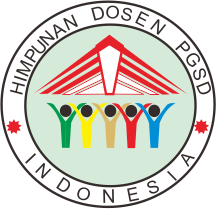DEVELOPMENT OF E-MODULES USING MICROSOFT SWAY TO IMPROVE LEARNING OUTCOMES OF PANCASILA EDUCATION FOR GRADE V STUDENTS OF SDN 1 SENDANGMULYO
DOI:
https://doi.org/10.55719/elenor.v3i1.1354Keywords:
e-modul, Microsoft sway, learning outcomesAbstract
Technology-based teaching materials can attract students' interest and attention in the learning process. This research was conducted with the aim of developing an e-module product using microsoft sway to improve student learning outcomes. This research method is Research and Development (R&D) using the ADDIE model, namely Analysis, Design, Development, Implementation and Evaluation. The research subjects were teachers and 5th grade students of SDN 1 Sendangmulyo. Data collection techniques through observation, interviews, expert validation, questionnaires, and tests. The results of media expert validation are 96%, while the results of material expert validation are 96%. When referring to the validation criteria table, this e-module is declared valid. The results of the teacher response questionnaire are 100% while the student questionnaire is 96.6%, so based on the practicality analysis table, this e-module is declared very practical. The results of the trial conducted on grade 5 students of SDN 1 Sendangmulyo were very effective, because the percentage of students who achieved the criteria for achieving learning objectives (KKTP) was 93%. When referring to the effectiveness level criteria table, this e-module is effective.
Downloads
References
M. Tahir, “Pengembangan modul pembelajaran pendidikan pancasila dan kewarganegaraan terintegrasi islam pada madrasah aliyah swasta di kota batam.",” Universitas Islam Negeri Sultan Syarif Kasim Riau, 2021. [Daring]. Tersedia pada: http://repository.uin-suska.ac.id/id/eprint/59621
M. Markamah dan E. P. Nugraheni, “Pengembangan Media Pembelajaran Berbasis Microsoft Sway Mupel Seni Rupa Materi Menggambar Ilustrasi Di Sekolah Dasar,” J. Pendidik. Seni Seni Budaya, vol. 7, no. 1, hal. 64–72, 2022, doi: 10.31851/sitakara.v7i1.7468.
W. Ramadhan, R. Meisya, R. Jannah, dan K. Z. Putro, “E-modul Pendidikan Pancasila Berbasis Canva Berbantuan Flip PDF Profesional untuk Meningkatkan Hasil Belajar Siswa Sekolah Dasar,” J. Pemikir. dan Pengemb. Sekol. Dasar, vol. 11, no. 2, hal. 178–195, 2023, doi: 10.22219/jp2sd.v11i2.27262.
D. E. Malla Avila, “Pengembangan Media Pembelajaran Berbasis Website (Microsoft Sway) Untuk Siswa Kelas IV Materi Bagian Tubuh Tumbuhan dan Fungsinya,” Universitas Nusantara PGRI Kediri, 2022.
A. Cahyadi, Pengembangan Media dan Sumber Belajar: Teori dan Prosedur. Serang: Laksita Indonesia, 2019.
S. M. Naimah dan W. Wirastiwi, “Pengembangan Lembar Kerja Siswa (Lks) Berbasis Realistic Mathematics Education (Rme) Pada Materi Bangun Datar Untuk …,” Pros. Semin. Nas. Penelit. dan Pengabdi. Masy., vol. 5, no. 2, hal. 606–612, 2020, [Daring]. Tersedia pada: http://repository.ummat.ac.id/3634/1/COVER-BAB III.pdf
S. Arikunto, Prosedur Penelitian. Jakarta, 2019.
S. Perwitasari, dun Akbar, dan S. Perwitasari Pendidikan Dasar, “Pengembangan Bahan Ajar Tematik Berbasis Kontekstual,” J. Pendidik., vol. 3, no. 3, hal. 278–285, 2018, [Daring]. Tersedia pada: http://journal.um.ac.id/index.php/jptpp/
F. Rahmi, Iltavia, dan R. H. Zarista, “Efektivitas Pembelajaran Berorientasi Matematika Realistik untuk Membangun Pemahaman Relasional pada Materi Peluang,” J. Cendekia J. Pendidik. Mat., vol. 5, no. 3, hal. 2869–2877, 2021, doi: 10.31004/cendekia.v5i3.673.



















